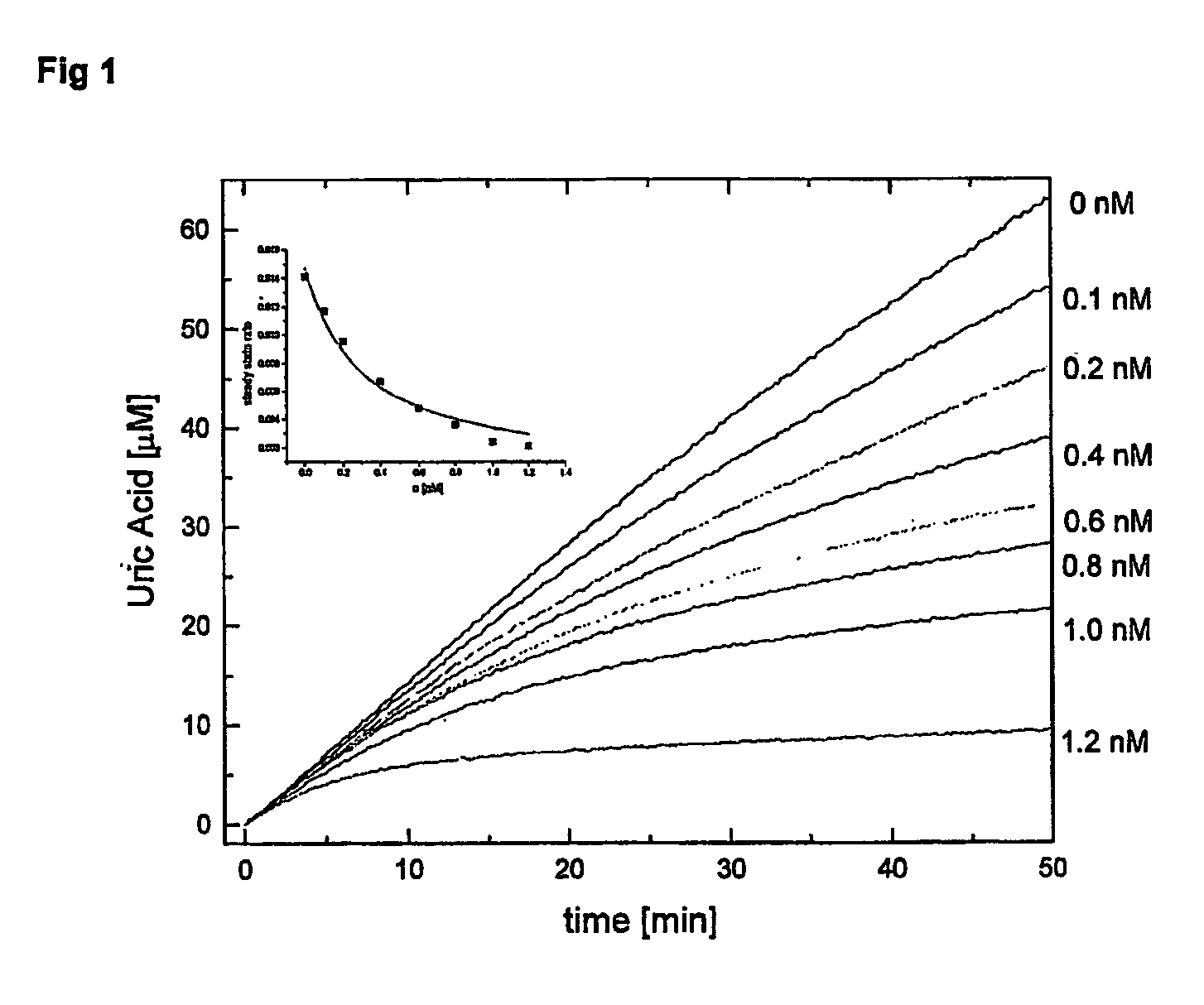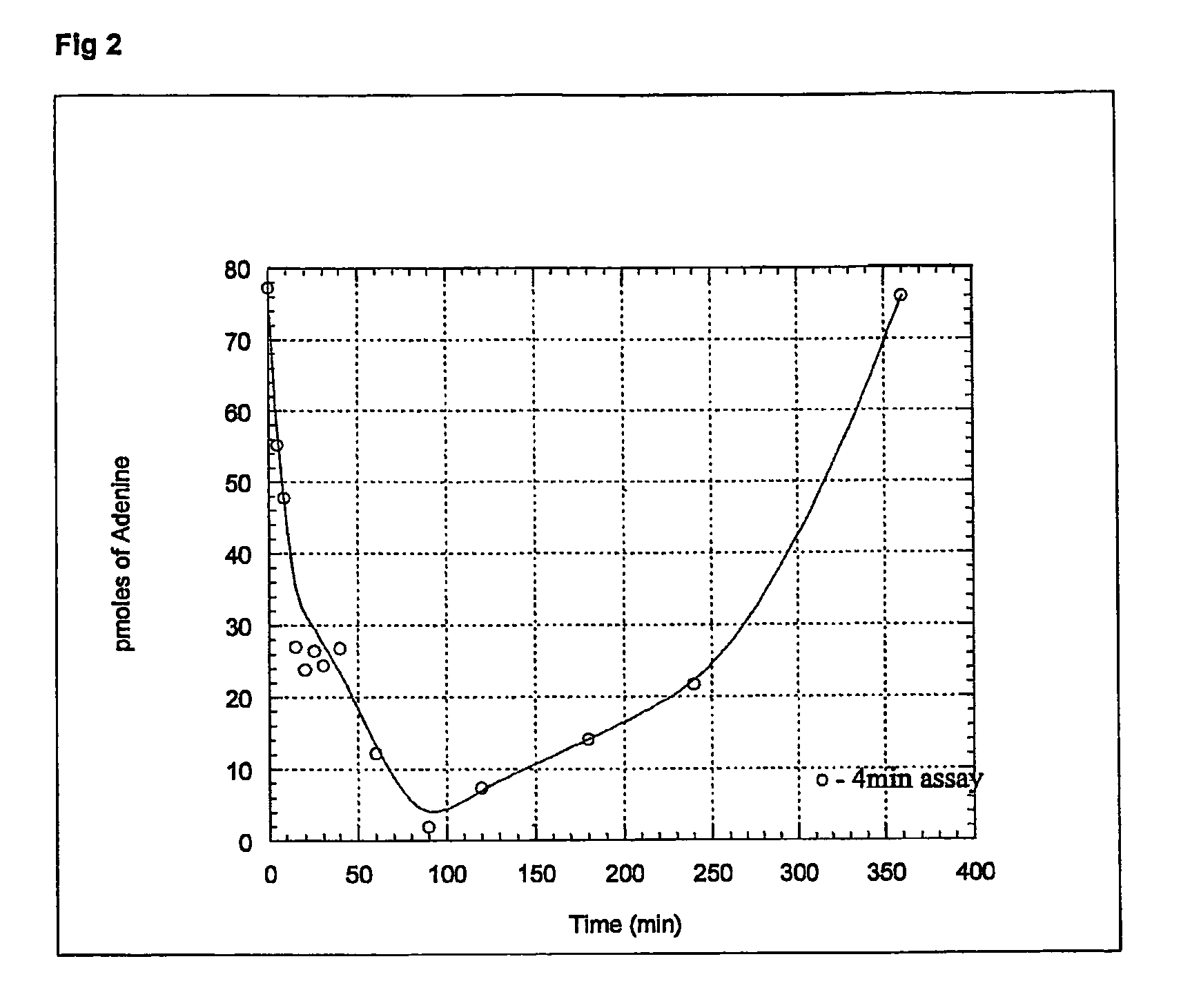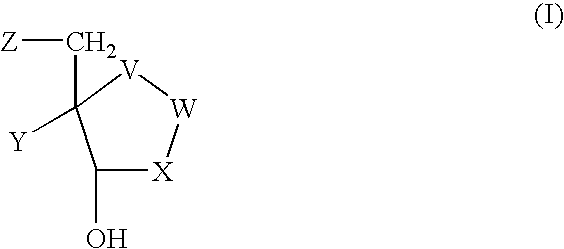Inhibitors of nucleoside phoshorylases and nucleosidases
a technology of nucleosidases and phoshorylases, which is applied in the direction of antibacterial agents, drug compositions, immunological disorders, etc., can solve the problems of limiting the polyamine biosynthesis and the salvage pathway of adenine in the cell, and achieves the effect of reducing the number of adenine oxidative stress
- Summary
- Abstract
- Description
- Claims
- Application Information
AI Technical Summary
Benefits of technology
Problems solved by technology
Method used
Image
Examples
example 1
[0092]N-tert-Butoxycarbonyl-(3R,4R)-3-hydroxy-4-(hydroxymethyl)pyrrolidine (1). N-tert-Butoxycarbonyl-(3R,4S)-3-hydroxy-4-[(1S)-1,2-dihydroxyethyl]pyrrolidine (3.4 g, 13.7 mmol) in ethanol (50 mL) was added dropwise to a stirred solution of sodium periodate (3.4 g, 16 mmol) in water (25 mL) while maintaining the reaction temperature at 0° C. The reaction was left an additional 20 min after which time sodium borohydride (2.0 g, excess) was added portionwise while again ensuring the reaction temperature was maintained at 0° C. On complete addition the solid was filtered, washed with ethanol (50 mL) and concentrated in vacuo to afford a syrup. Chromatography afforded 1 (2.74 g, 92%) as a syrup.
example 2
[0093]N-tert-Butoxycarbonyl-(3R,4R)-3-benzyloxy-4-(benzyloxymethyl)pyrrolidine (2). Sodium hydride (140 mg, 60% oil dispersion, 3.7 mmol) was added portionwise to a stirred solution of benzyl bromide (300 μL, 2.8 mmol) and 1 (200 mg, 0.92 mmol) in DMF (10 mL) at 0° C. On complete addition the resulting suspension was allowed to warm to r.t., diluted with toluene (100 mL), washed with water (50 mL), brine (50 mL), dried (MgSO4), and concentrated in vacuo to afford a syrup. Chromatography afforded 2 (350 mg, 96%) as an oil which was used in the next step without purification.
example 3
[0094](3R,4R)-3-Benzyloxy-4-(benzyloxymethyl)pyrrolidine hydrochloride (3). Hydrochloric acid (2 mL, 1M) was added to a solution of 2 (500 mg, 1.3 mmol) in methanol (2 mL) and the resulting mixture stirred for 1 h at 40° C. On completion the reaction was concentrated in vacuo to afford 3 as the hydrochloride salt (330 mg, 90%). 1H NMR δ 7.35-7.21 (m, 10H), 4.48 (m, 4H), 4.08 (d, J=2.9 Hz, 1H), 3.53 (m, 1H), 3.44 (m, 3H), 3.24 (m, 1H), 2.65 (m, 1H). 13C NMR δ 138.0, 137.6, 128.9, 128.8, 128.3, 128.2, 79.3, 73.7, 71.9, 68.7, 49.6, 46.4, 44.8.
PUM
 Login to View More
Login to View More Abstract
Description
Claims
Application Information
 Login to View More
Login to View More - R&D
- Intellectual Property
- Life Sciences
- Materials
- Tech Scout
- Unparalleled Data Quality
- Higher Quality Content
- 60% Fewer Hallucinations
Browse by: Latest US Patents, China's latest patents, Technical Efficacy Thesaurus, Application Domain, Technology Topic, Popular Technical Reports.
© 2025 PatSnap. All rights reserved.Legal|Privacy policy|Modern Slavery Act Transparency Statement|Sitemap|About US| Contact US: help@patsnap.com



